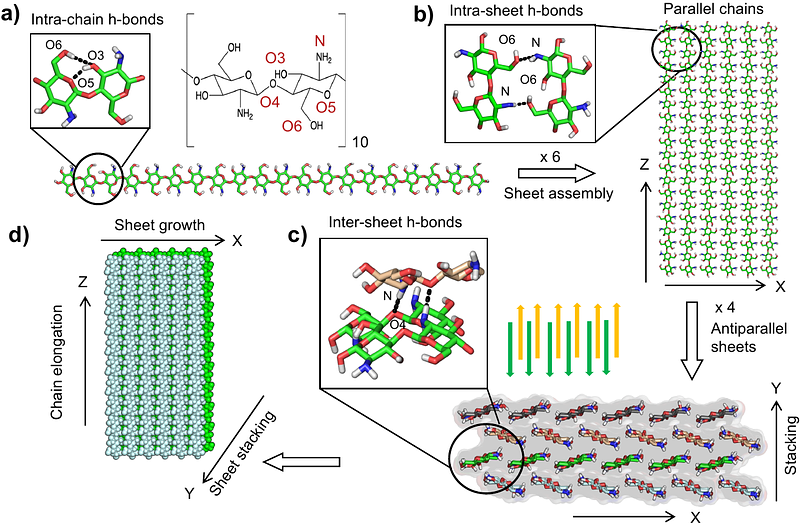Electric Field Induces Dewetting Transitions in Amphiphilic Crystalline Domains of Chitosan-Based Hydrogels

Electric Field Induces Dewetting Transitions in Amphiphilic Crystalline Domains of Chitosan-Based Hydrogels
Romany, A.; Payne, G. F.; Shen, J.
AbstractThe past two decades have witnessed significant technical advances in the electrodeposition of pH-responsive, self-assembling biopolymers (e.g., chitosan and collagen), yet a detailed molecular-level understanding of how an imposed electrical field affects supramolecular structure is largely unknown. Here we performed all-atom molecular dynamics simulations to investigate the effect of a weak, constant uniform electric field of 4 mV/nm on the nanofibril structure of chitosan composed of 4 antiparallel sheets, each having 6 chains of 20 neutral glucosamine units. The simulations with an aggregate time of 21 microseconds demonstrated that under the electric field, the nanofibril becomes more ordered, while contracting in the sheet-stacking thickness. Analysis revealed that these effects are the result of the field-induced disruption of water-bridged intra- and inter-sheet hydrogen bonds, which expels water molecules from the fibril and at the same time stabilizes the intra- and inter-sheet hydrogen bond network. Our work reveals a novel mechanism by which an electric field induces dewetting transitions between amphiphilic sheets, extending beyond the passive dewetting phenomenon that has been extensively studied in the theoretical community. The electric field-induced dewetting represents a novel approach for controlling the hydration state and microscopic structure of materials. Given that the simulated field strength is similar in magnitude to the electric field across biological membranes, the findings also have implications for understanding cellular processes.